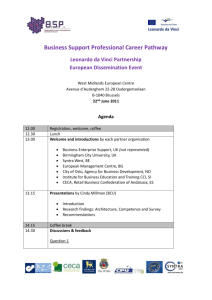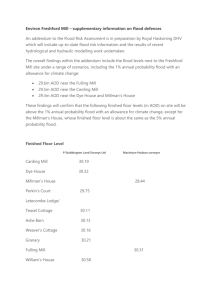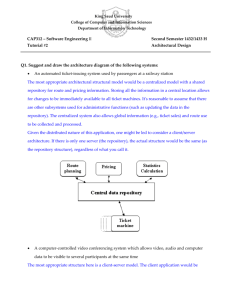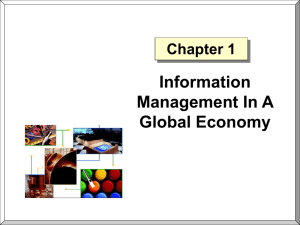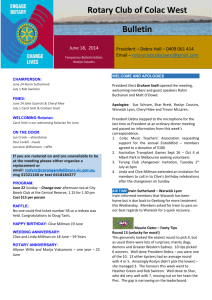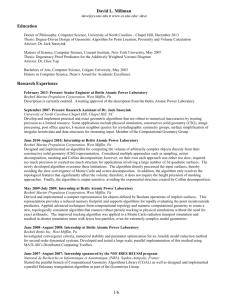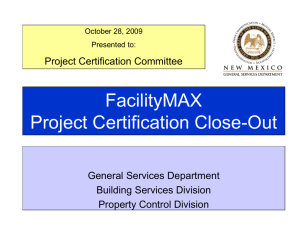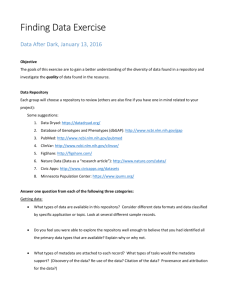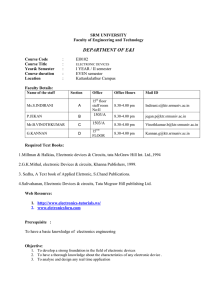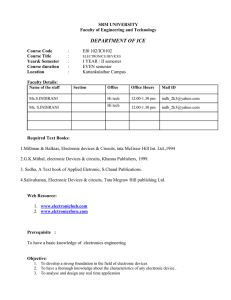PowerPoint - Columbia University Libraries
advertisement
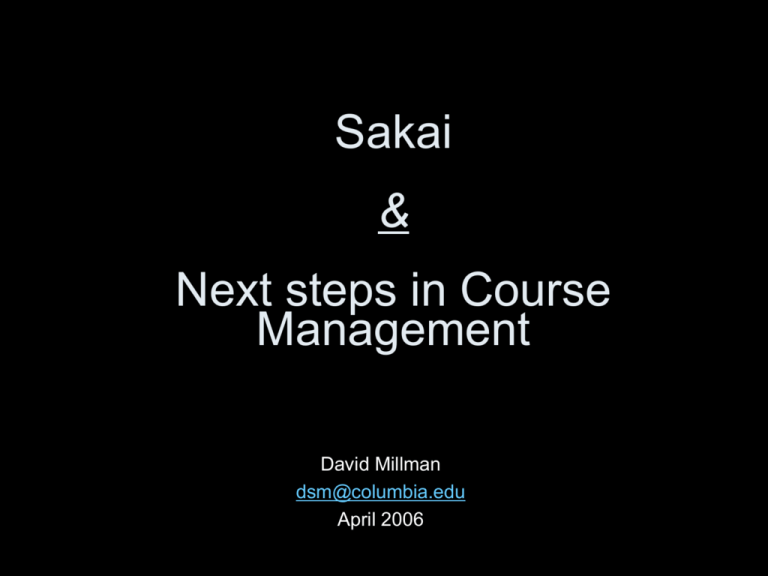
Sakai & Next steps in Course Management David Millman dsm@columbia.edu April 2006 Sakai • Community source software development effort to design, build and deploy a new Collaboration and Learning Environment for higher education. – Started by U. Mich, Indiana U., MIT, Stanford – Mellon, Hewlett funded • Columbia is a member of Sakai Educational Partners Program (SEPP) along with over 80 institutions and 12 commercial affiliates – CUIT and CCNMTL jointly funding partnership • Web site: http://www.sakaiproject.org/ Millman -- 2006 April -- 2 Why Sakai? • Sakai is open, extensible platform that supports customization, development, rapid advancement • Matches many existing CourseWorks features • Has desired features not found in CourseWorks • Community Development Model (with our peers) • Leverages existing standards Millman -- 2006 April -- 3 Current Status: Pilot • • • • Sakai Pilot Site - http://sakaipilot.cc.columbia.edu/ Running on CUIT servers Ca 12 courses, 1,000 students Features not found in CourseWorks: – – – – – – – Improved file access, including WebDAV Calendar, linked to assignments, announcements Inline Assignments Chat, Presence RSS Feeds Customizable interface Cross-platform Web Editing Tool Millman -- 2006 April -- 4 Active Development Date Spring, 2006 Summer, 2006 Sakai Release 2.1.2 2.2 Test Server 2.1.2 Possible tool candidates: •OSP 2.1 •RWiki •Blog •Message Center Production Server for Pilot 2.0.1 Fall, 2006 Spring, 2007 2.2 Possible tool candidates: •Lancaster collab tools •Others, TBD 2.1.x 2.2.x Millman -- 2006 April -- 5 Pilot Next Steps • Monitor Sakai Progress - software, user feedback, governance, future funding model • Upgrade Pilot for Fall 2006 - ePortfolio, Wiki, Blog, RSS, Editors, Message Center, Appearance (Skins) • Determine top priorities – For use as CourseWorks platform – For non-course sites (research, admin, student) – As a development platform for new capabilities Millman -- 2006 April -- 6 Library Integration: Today CLIO Courseworks course reserves workflow shared infrastructure (db) Millman -- 2006 April -- 7 Library Integration: Options Institutional Repository Platform (e.g. DSpace) ? CLIO ? Courseworks next gen ? ? ? Millman -- 2006 April -- 8 Library Integration: Scaling Institutional Repository Platform A (e.g., articles) Institutional Repository Platform B (e.g., datasets) CLIO Courseworks next gen ? External repository C ? Syndicated search service E Custom course site D Personal citation-cart / annotation service F Millman -- 2006 April -- 9 Service Library Integration: Scaling Institutional Repository Platform A (e.g., articles) Institutional Repository Platform B (e.g., datasets) CLIO Courseworks next gen ? External repository C ? Syndicated search service E Custom course site D Personal citation-cart / annotation service F Millman -- 2006 April -- 10 Possible Architectures single sign-on (e.g., WIND, Shibboleth) OPAC view Repository view Course mgmt view Study-group view sakai platform shared infrastructure external service Millman -- 2006 April -- 11 Library/Repository Roles • Library offers consistent metadata for all items used by the instructor • Library should offer consistent service interfaces • What are the right services? (e.g., Sakai twin peaks for search-type discovery) Millman -- 2006 April -- 12 Sample “Service-Oriented” Architecture Repository Repository Search CU Stacks Subset Digital Journal Tag Course Web Site Repository “browser” Millman -- 2006 April -- 13 Decisions • • • • Repository definition / collection scope Service definition Acquisition/publication definition Delivery to non-web-browsers (software agents, mobile devices) • Services, not web sites? Millman -- 2006 April -- 14 Personal Library vs. Research Library (Print) • Individual selection criteria • Personal shelving system understood only by individual • Decision to lend material made by library owner • No backup preservation • Professional selectors in each field • Standardized systems for cataloging and retrieval • Lending policies and tracking system for distribution of content • Duplicate copies in multiple libraries Millman -- 2006 April -- 15 Individual Web-Environments vs. Scalable Digital Library Resources • Develop individual digital teaching tool • Organize libraries of digital resources for reuse • Broad range of approaches to citation and permissions • System to standardize citation and track IPR • Individual systems for tagging content • Consistent metadata enforced by workflow rules • Organize digital content for individual class • • Storage and access dependent on individual author Automatic correlation of digital resources to general conceptual structures and standards Reliable access and archiving • Millman -- 2006 April -- 16 More Next Steps • Journal of Jazz Studies (Fall ’06, Ford Foundation funding) • Investigate service requirements through workflow • “Spectrum of stability” Millman -- 2006 April -- 17 Possible Spectrum Active collaboration Multiple users w/“collab space” functions Versioning Citable workingpaper Publication File system metaphor / w/some metadata Institutional repository / metadata Preserved / archived / cataloged Scholarly research activity Library curation Millman -- 2006 April -- 18 Research Questions • How many discrete stages? • What features are appropriate at each stage? • What actions happen as content crosses stage boundaries? • Can we create service requirements from these features? Millman -- 2006 April -- 19 Immediate future • Analysis, opportunity, leverage existing technologies & skills • Incremental and iterative • Research projects • Socialization • Policy Millman -- 2006 April -- 20 Slides from Kim Cummings Rob Cartolano Kate Wittenberg Millman -- 2006 April -- 21 Questions etc Millman -- 2006 April -- 22
